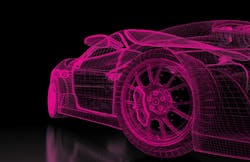This Week's Top Advanced Vehicle Design News
April 21, 2021—Location technology is crucial to a connected vehicle ecosystem that will support full vehicle autonomy. It's already crucial for drivers who are navigating every day.
Most are familiar with GPS (global positioning system), but that's just a subset of GNSS (global navigation satellite system), which can involve any array of satellites that provide location services.
Trimble is an expert in global positioning technology and the company recently announced a partnership with VSI Labs to work on autonomous vehicle solutions. A press release on the partnership said that Trimble's technology optimizes for a continual connection, which is essential for autonomous driving. If there's an obstruction, Trimble's technology can "augments its precise GNSS positioning with inertial technology to maintain continuous positioning and orientation while on the road," the press release says.
To learn more about GNSS technology and its application in vehicles, ADAPT reached Stephen Ruff, general manager of Trimble’s On-Road Autonomy Division, for a quick Q and A.
Tell us about the role of positioning technology like GNSS in automotive roles like ADAS features and autonomy.
GNSS is one element of a comprehensive positioning technology stack that supports robust and safe ADAS and fully-autonomous vehicle systems. GNSS is the one technology that locates a vehicle anywhere in the world. It can initialize the positioning system and bridge the gaps in the perception (computer vision) and other localization technologies.
How is the technology of global positioning/GPS/GNSS evolving or improving?
Today, manufacturers of automotive-grade GNSS components offer multi-frequency/multi-
To read more from this interview, see the full story over at ADAPT.
